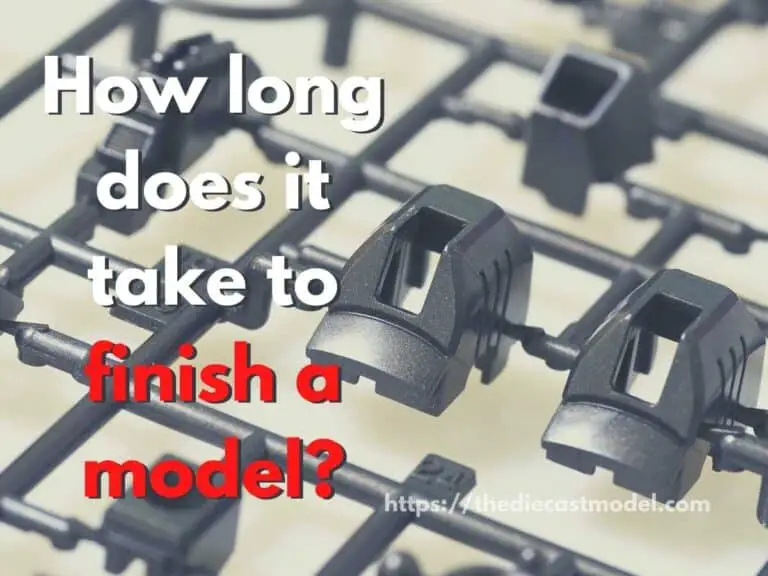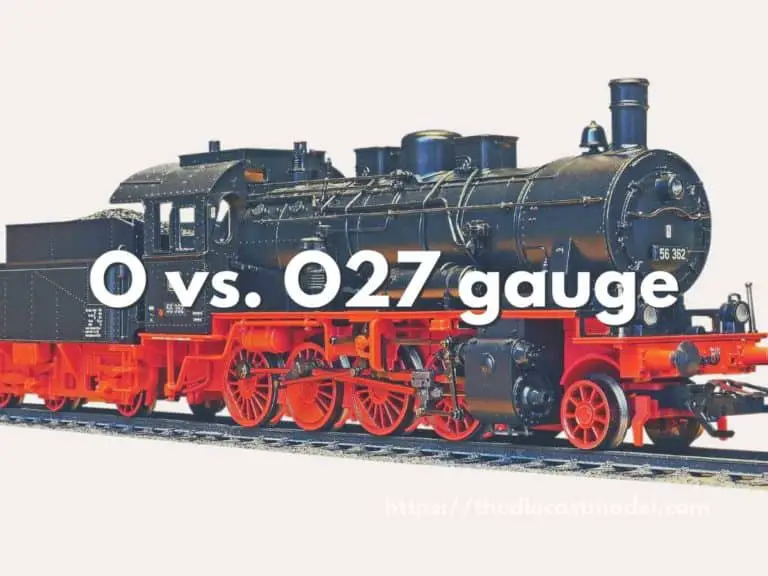Marx Trains: Worth, Production, and History
Marx trains was once a popular train known to the public. It was one of the few companies that flourished even during the great depression when most companies were in decline. Currently, it is one of the brands that only collectors would recognize. But what is the history of Marx trains? Why did they succeed, and how did they decline? Since their products aren’t in production, are there old Marx trains worth the money? These are the question we will answer in this post.
Marx trains is a company that is in business from 1919 to 1980. It was once one of the most successful toymakers worldwide and reached its peak in the 1950s. It was known for producing toys at a lower price compared to its competitor.
This post will discuss the brief history of Marx trains and how they became successful. We will also talk about their decline and some examples of rare Marx trains sold for a lot of money.

Are Marx trains still made?
Marx trains aren’t being made and have ceased their production in 1974. There are many reasons behind this, but the most notable reasons are that the hobby is declining, and Marx wasn’t able to adapt to newer trends in the toy niche.
Sadly, Marx trains aren’t being made anymore, and they started their decline when their founder retired.
Marx’s founder, Louis Marx, was considered a great entrepreneur, and he started his company with only a passion for business.
However, the history of Louis Marx is the reason why the company went downhill after his retirement.
To explain, let me introduce you to a brief history of the company.
Louis Marx started his career in toys when he worked for Ferdinand, J. Strauss Company which is a toy manufacturer.
Marx had great passion and worked hard that he was promoted to be a manager at the age of 20.
However, Marx wasn’t a person that would settle for being a manager, and he started his own business in 1919, which he named Louis Marx and Company.
Marx started his business from nothing, and the company started as a middleman where they would subcontract toy manufacturers and sell their products as his own.
Marx’s enthusiasm helped him earn enough money this way until he had enough money to start manufacturing.
Later, Louis Marx partnered with his brother David Marx and their skills synergized to make Marx trains one of the most successful toy companies worldwide.
Louis is a great innovator and marketer, while his brother David is good at managing. Their combination took the company to heights.
However, it is until later that Marx started to sell model trains.
Marx company started their model train business in 1929 when they entered a 5-year contract with Girard model works and came up with their first model train line called the Joy Line.
In 1935, he acquired Girard model works and started designing their model trains.
Marx became one of the most successful model train companies because it targeted an untapped market. Their competitors were always selling high-quality model trains at a premium price, while Marx started producing cheaper model trains that attracted more buyers.
This is because Marx is known for their motto, which is to “give the customer more toys for less money.”
This campaign was so successful that they started mass-producing cheap trains, which dominated the market. They even beat the sales of Lionel, the largest O scale model train company, at their peak.
Marx became successful because they did various ways to decrease the price of their models. They mass-produced, outsourced, and used cheaper materials on their models, making their products significantly cheaper compared to their competitors.
They were even known for their O27 scale model trains, which are considered to be one of the most popular variants of the O scale up to this date.
Recommended Read: To know the difference between the O scale and the O27, please check this post: O vs. O27.
But the point is the O27 is a cheaper variant of the O scale, which became a huge success.
Marx was also one of the first to offer HO scale model trains, which were successful.
To lower their price, they also introduced plastic models to model railroading which further decreased the cost of their models.
However, Louis Marx’s history is also one of the reasons why the company went down. We will discuss their downfall in the next section.
When did Marx stop making trains?
Marx stopped making trains in 1974 when the model railroading hobby was in decline. However, some of the toolings used in Marx trains are still used today, such as Lionel’s K-Line.
Sadly, even Marx Trains started to decline, and the once-popular toy brand became a brand only known to collectors in the modern world.
While Louis Marx’s passion is the reason why the company reached its peak, it is also the reason why the company declined.
As I said in the earlier section, Louis Marx started as a manager for another company and then began a business of his own.
He knows that anyone can do that to his company, so he didn’t train anybody to replace him.
However, he is not getting younger, and his age is becoming a hindrance to the company. The problem is he can’t retire since nobody can replace him since he didn’t train anybody to be the next CEO.
In short, there is no good exit strategy for their CEO.
That means the only way for him to retire is to sell the company which he did in 1972 when he sold the company to Quaker Oats Company for $54 million.
This is where the decline started since no one could manage the company. Furthermore, model railroading is in decline, with newer toys emerging in the market.
Marx wasn’t able to keep up with the trends of the toy market, such as the rise of electronic toys, unlike when Louis Marx was able to be the first adopter of the Yoyo, which was a huge success.
Louis Marx’s retirement was a massive blow to the company, which started its decline.
That’s why in 1974, the production of Marx trains stopped, and the company was sold to Dunbee-Combex-Mar in 1976.
The transfer is also not successful as Dunbee-Combex-Mar is going through an economic problem in the UK.
Sadly, the last Marx factory caught fire in 2016, and Marx factories aren’t around today.
Right now, Marx trains aren’t being produced. However, other companies use their molds to make their model trains.
The perfect example is Lionel’s K-Line, where they still use Marx’s mold in their model trains.
However, since Marx trains aren’t around anymore, their old model trains can be worth a lot of money. As a result, their products are becoming rarer, and collectors are starting to value them more than before.
The last section will give examples of some collectible Marx trains that were sold for a lot of money.
Are Marx trains worth anything?
Generally speaking, old Marx trains can be sold for $50 to $500 to collectors. However, some Marx trains can be sold for thousands of dollars. For example, a rare 1959 Marx Allstate train set was sold in an auction for $1,425.
Marx trains are usually mass-produced and made with cheap materials such as plastics. That’s why Marx isn’t considered to be collectible when the company is still around.
However, since the company hasn’t been producing model trains since the 1970s, more collectors are looking for well-maintained Marx trains.
For example, the rare 1959 Marx Allstate Train set is an old train set that was well maintained. Furthermore, the train set is only produced in a single year, so fewer models are around compared to their other products.
The 1959 Marx Allstate Train set was sold in an auction for $1,425.
Another example is the Marx Unique Art Circus train set which is also a well-maintained model train set from Marx. Even if the model is old, the model is still functioning with a working front, reverse movements, and a headlight.
Since it is in excellent condition, this model was sold for $1,288 in an auction.
Another Marx train set that was sold for a lot of money is the Marx Army Train Set with Barracks, which is a complete train set that includes decorations. What’s more, is that the set consists of a rare critter tank with a flat ramp. This set was sold for $1,200.
If you’re lucky, you can also find Marx trains made with copper. However, since most Marx train sets are made with plastics, having a Copper Made Marx train can also cost a lot.
For example, a rare Marx Copper Train set that only includes the train and tracks were sold in an auction for $906. Remember that this set only included a simple oval track and the train but was sold for that much.
There are many expensive Marx trains, and these are just examples.
Another is the prewar Marx O gauge Red Critter which is one of the old models from Marx. This train was in excellent condition and was sold for $811.
We also have the rare 1957 Marx Western Pacific, which was featured in the Spiegel catalog. What’s surprising is the model isn’t well maintained with some stains, but it was sold for $787.
As you can see, there are lots of Marx trains that are worth a lot of money.
To know the value of your Marx train, the easiest way is to go to eBay and search for your model. There, you can find the closest one to what you have and get an estimation of its value.
What’s next? Do you know about Lionel’s Legacy system? Lionel is one of its main competitors of Marx, and the company is still around today. To know one of their latest technology which is the Legacy system, you can check it here: What is Lionel Legacy System?







